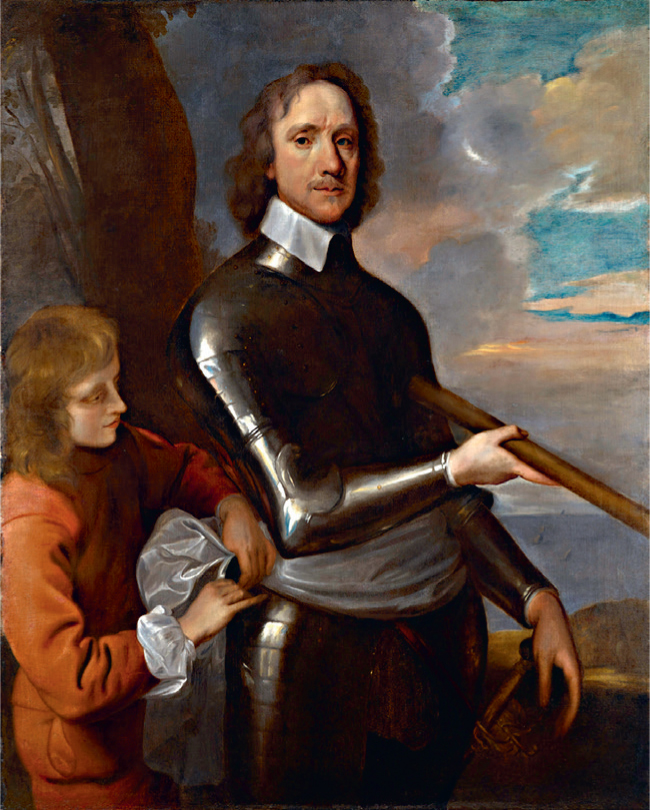
1. Cromwell as Lord Protector, with the symbols of royalty. This engraving of his wooden and wax effigy was made in 1659, shortly after his death.

2a. ‘The Religious Sucessfull and truly Valliant Lieutenant Generall Cromwell’: one of the earliest known images, made in the 1640s.

2b. The Leveller John Lilburne, in a familiar setting, demonstrating ‘The liberty of the Freeborne English-Man conferred on him by the House of Lords’, 1646.

3. A contemporary battle plan of Naseby, 1645.

4a. Cromwell and Charles I by Paul Delaroche, 1831. The German poet Heinrich Heine described Cromwell as looking ‘like a woodman who has just felled an oak’.

4b. Protective hat (leather, with iron bands) worn by John Bradshaw to pass sentence on Charles I, 1649.

5. The Royalist view of the Civil War, 1647, by John Taylor.

6a. Cromwell’s reinvestiture as Lord Protector, 1657. The ceremony was quasi-regal, from the Speaker’s addressing Cromwell as ‘Highness’ to the ‘Severall thinges’ presented to him: purple robe lined with ermine, gold sceptre, as well as Bible and sword.

6b. Robert Walker’s portrait of Cromwell as General, 1649, around the time of the Irish expedition.

7a. Cromwell’s letter to the House of Commons after the victory at Naseby, in which he encouraged Parliament to promote liberty of conscience, 1645.

7b. A favourable answer to a petition of the East India Company, 1657, in which Protector Cromwell uses the royal ‘we’.

8a. Cromwell’s death mask, taken from his funeral effigy.

8b. Cromwell’s burial plaque, removed from his coffin in 1661, showing the arms of the Protectorate, and its motto Pax Quaeritur Bello (peace is sought by war).